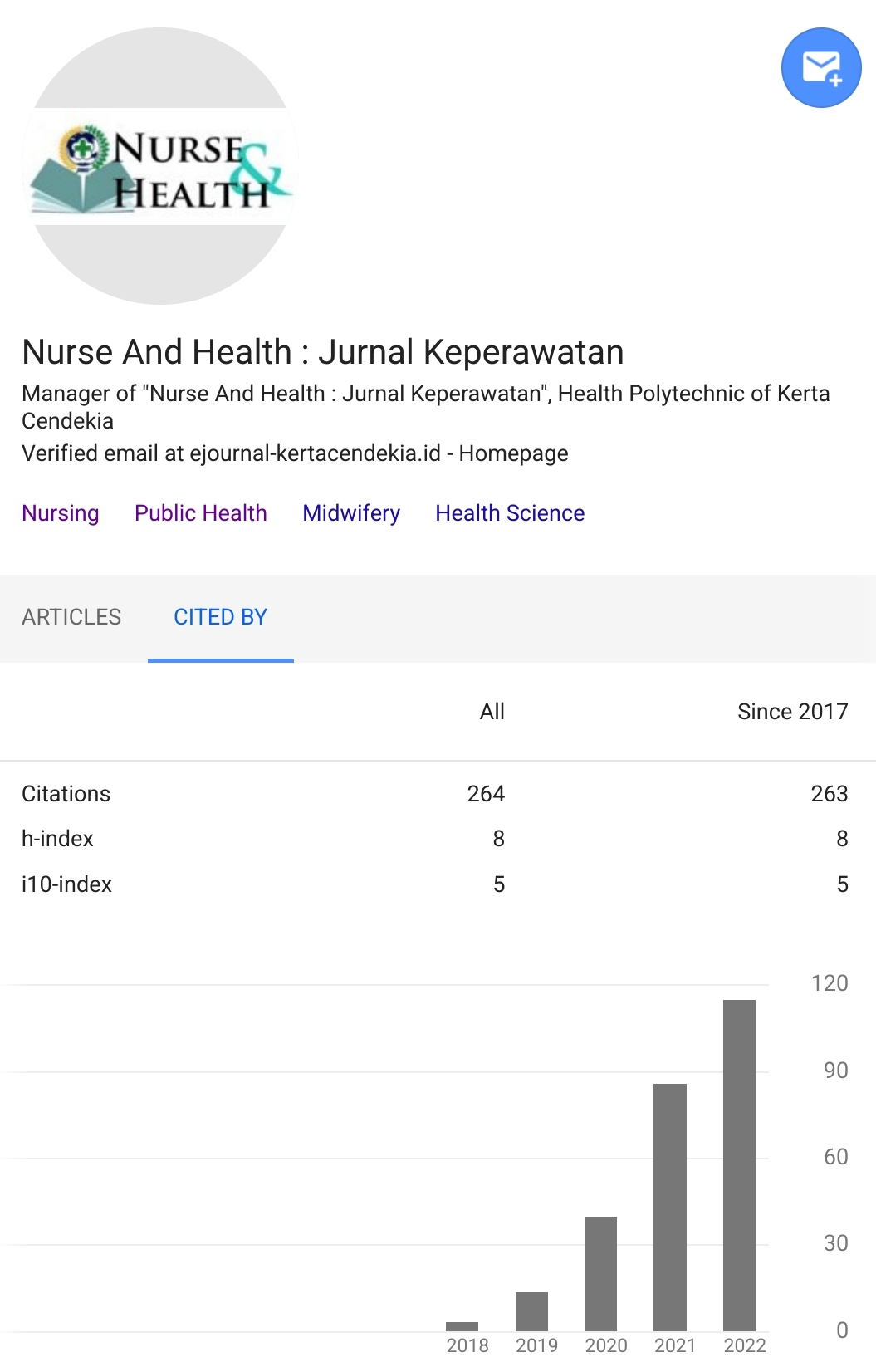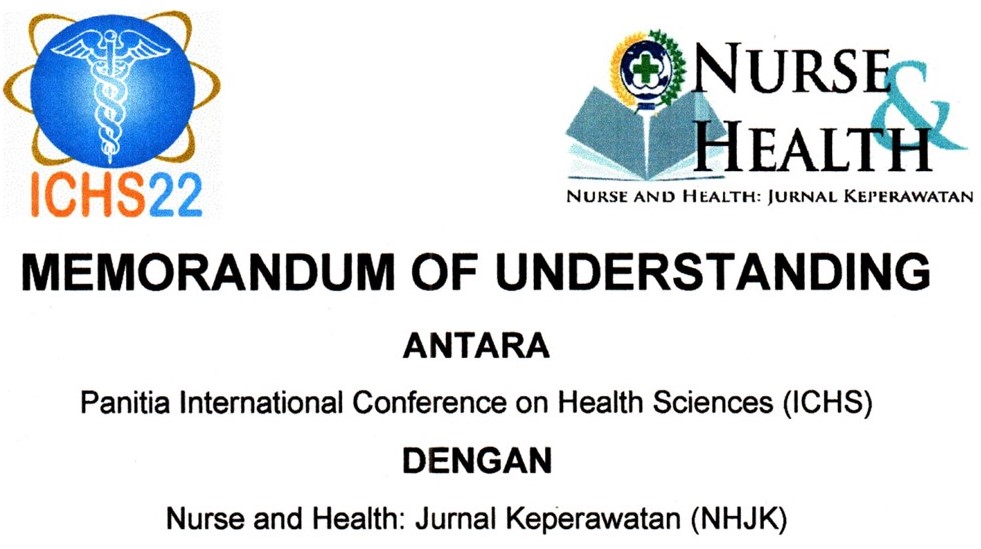EFFORTS TO IMPROVE NURSING COMMUNICATION: A NARRATIVE REVIEW
Abstract
Background: Communication is an interaction process that is highly essential in building nurse-patient interpersonal relationships. Good nurse communication-patient will have a good impact on the treatment plan and recovery for the patient. Improper communication can lead to mistaken nursing care provision and even lead to injury and death. Objective: This literature review aimed to know the efforts to improve nurse-patient communication. Design: This literature review used narrative review design. Data Sources: The databases used in narrative review are Scopus, Science Direct, ProQuest, and PubMed. The journal is limited to the publication year 2016 - 2020 with the area of the nursing medicine journal, full text Portable Document Format (PDF) journal. This literature review uses 4 articles appropriate the inclusion criteria. The study of articles and data extraction were carried out separately by the researcher, if there were differences, the results were taken by consensus. Review Methods: The review method for this literature review using a narrative method by classifying the similar extracted data according to the research findings. Results: The databases used in the literature review are Science Direct, Scopus, PubMed and ProQuest. The journal is limited to the 2016 – 2020 publication year with the area of nursing medicine journals, improving nurse communication, full text open access pdf journals, research designs. This literature review was identified with the number of science direct: 45, Scopus: 242, PubMed: 36 and ProQuest: 492, then screened and found 4 articles that matched the inclusion criteria. The study of articles and data extraction were carried out separately by the researcher, if there were differences, the results were taken by consensus. Conclusion: Nurse communication training has a positive impact where nurses have skills in developing knowledge and capability in improving nurse communication performance. Good communication nurse-patient can increase the patient's cure rate.Downloads
References
Amalia E HR. (2019). Komunikasi Terapeutik Mempengaruhi Kepuasan Keluarga Pasien di RSUD De Adnaan WD Payakumbuh. J Nurse Educt Pract. 23.
Chabibi M PE. ( 2019). Hubungan Komunikasi Terapeutik Perawat terhadap Kepuasan Pasien Pre Operasi di Instalisi Bedah Sentral. (464–72).
Dewi DLS, Widyana R, Sriningsih S. (2016) Pelatihan Analisis Transaksional(At) Untuk Peningkatan Kemampuan Komunikasi Interpersonal Pada Perawat Poli Eksekutif Di Paviliun Nusa Indah Rsud Dr Adhyatma Mph Provinsi Jawa Tengah. Insight J Ilm Psikol.18(2):128. DOI: https://doi.org/10.26486/psikologi.v18i2.392
Ferrández-Antón T, Ferreira-Padilla G, Del-Pino-Casado R, Ferrández-Antón P, Baleriola-Júlvez J, Martínez-Riera JR. (2020). Communication Skills Training in Undergraduate Nursing Programs in Spain. Nurse Educ Pract.102653. https://doi.org/10.1016/j.nepr.2019.102653 DOI: https://doi.org/10.1016/j.nepr.2019.102653
Hasanah H. (2017). Pengaruh Komunikasi Interpersonal Dalam Menurunkan Problem Tekanan Emosi Berbasis Gender. Sawwa J Stud Gend.11(1):51. DOI: https://doi.org/10.21580/sa.v11i1.1446
JCI. (2012). The Center for Transforming Healtgcare Releases the Hand off Communication Targeted Solutions Tool.
Omorogbe CE, Amiegheme FE. (2016). Nurses’ communication and patient satisfaction in a tertiary hospital in Benin City, Nigeria. J Med Biomed Res.15(2):47–56.
Pehrson C, Banerjee SC, Manna R, Shen MJ, Hammonds S, Coyle N, et al.(2016).Responding empathically to patients: Development, implementation, and evaluation of a communication skills training module for oncology nurses. Patient Educ Couns. 99(4):610–6. http://dx.doi.org/10.1016/j.pec.2015.11.021 DOI: https://doi.org/10.1016/j.pec.2015.11.021
Permatasari A.(2016). Meningkatkan Kepuasan Pasien Di Ruang Rawat Inap Rsu Kardinah. Pros Interdiscip Postgrad Student. 2:1–7.
Riskesdas K. Hasil Utama Riset Kesehata Dasar (RISKESDAS). (2018). J Phys A Math Theor.44(8):1–200. http://arxiv.org/abs/1011.1669%0Ahttp://dx.doi.org/10.1088/1751-8113/44/8/085201%0Ahttp://stacks.iop.org/1751-8121/44/i=8/a=085201?key=crossref.abc74c979a75846b3de48a5587bf708f
Sarka & Andrea.(2017). The Use Of Teaching Methods in Commununcation Training of Nurses at Universities.ABotikova. https://doi.org/10.1016/kontakt.2017.07.005.
Venny & Enie .(2019). Assertive Communication Training and Associate Nurses' Knowledge and Motivation: A Quasi Experenment.INSC.https: //doi.org/10.1016/j.enfcli.2019.04.126.
WHO. (2010) Framework dor Action on Interpersonal Education & Collaborative Practice. Geneva : World Heath Organization.
Younis JR, Mabrouk SM, Kamal FF. (2015). Effect of the planned therapeutic communication program on therapeutic communication skills of pediatric nurses. J Nurs Educ Pract. 5(8):109–20. DOI: https://doi.org/10.5430/jnep.v5n8p109
Copyright (c) 2021 Ariefatun Nisa Nisa, Luky Dwiantoro, Bambang Edi Warsito

This work is licensed under a Creative Commons Attribution-NonCommercial 4.0 International License.
Authors who publish with Nurse and Health: Jurnal Keperawatan agree to the following terms:
- Authors retain copyright licensed under a Creative Commons Attribution-NonCommercial 4.0 (CC BY-NC 4.0), which allows others to remix, tweak, and build upon the authors' work non-commercially, and although the others' new works must also acknowledge the authors and be non-commercial, they don't have to license their derivative works on the same terms.
- Authors are permitted and encouraged to post their work online (e.g., in institutional repositories or on their website) prior to and during the submission process, as it can lead to productive exchanges, as well as earlier and greater citation of published work (See The Effect of Open Access). Authors can archive pre-print and post-print or publisher's version/PDF.








_resize1.jpg)















